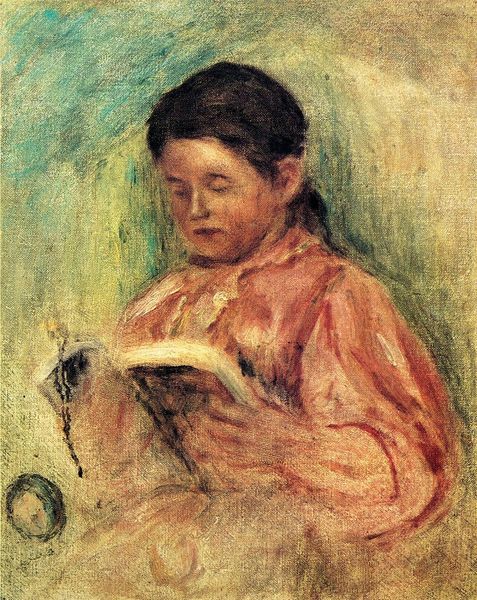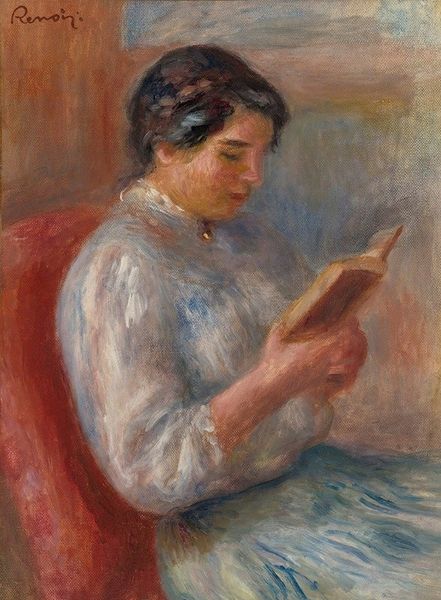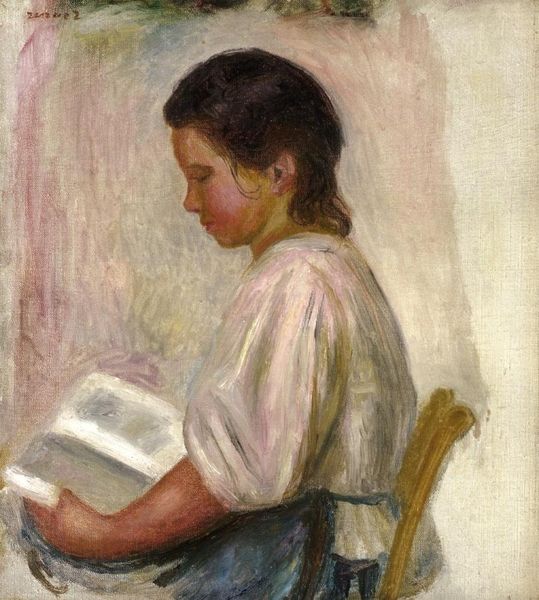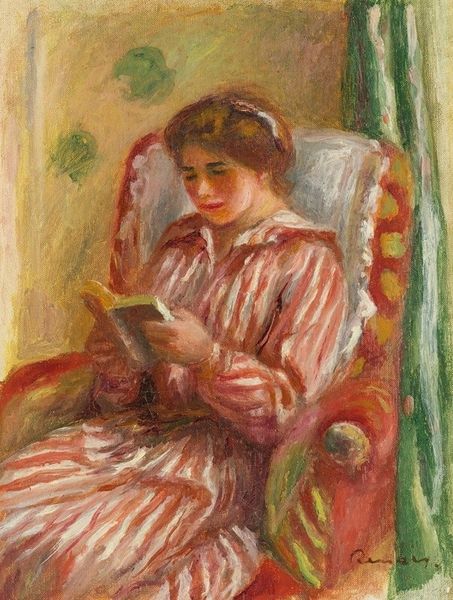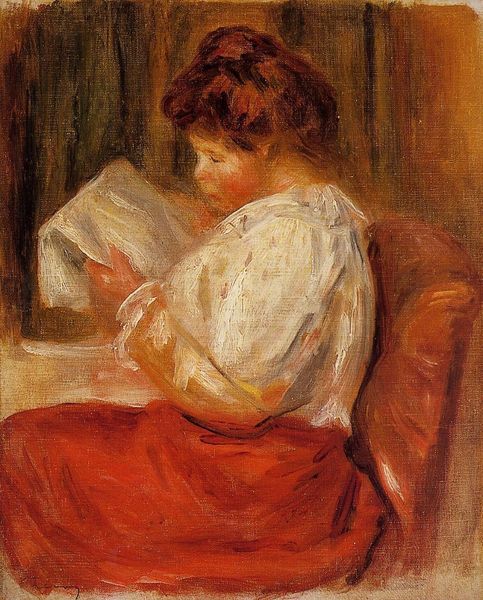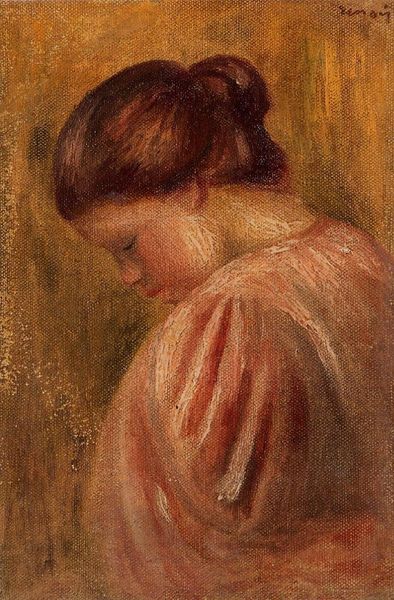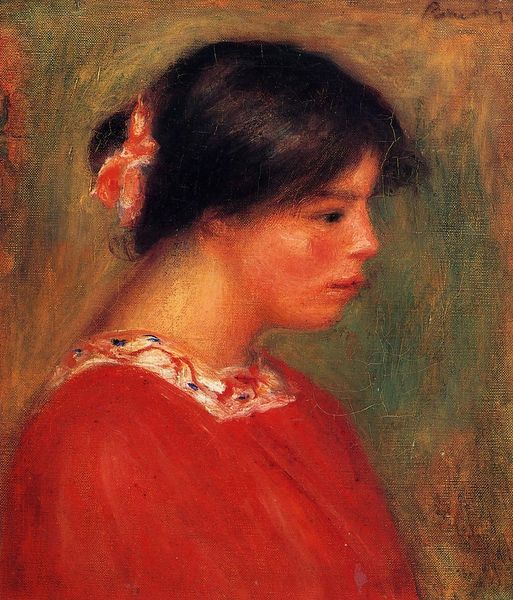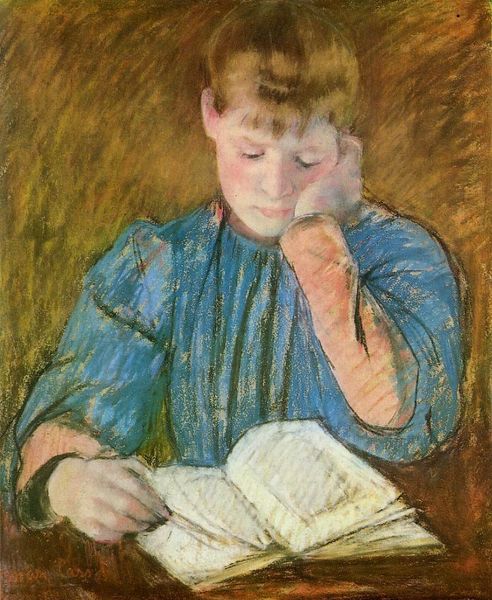
Copyright: Public Domain: Artvee
Curator: Let's discuss Pierre-Auguste Renoir’s painting, "Young Woman Reading," from around 1909. Editor: Immediately, I notice the vibrant use of oil paint; the reds in her dress almost pulse with a textural energy. It makes me want to investigate the canvas itself and Renoir's brushwork. Curator: Red is a fascinating color choice, given its traditional associations with passion, but also with status and formality. It subtly draws the viewer in, suggesting a level of introspection. Editor: Absolutely, and looking at the weave of the canvas showing through the paint layers, I’m drawn to think about how the physical process of painting – layering oil on linen – informs this intimacy. Was it painted quickly, alla prima, or slowly? Curator: Possibly a quick sitting; Renoir's later work, including this painting, certainly exudes a looseness. And perhaps there's a reason, a symbol behind this apparent spontaneity. Perhaps it is about making the everyday moment sacred. Do you see the gentle curve of her neck, how her features soften? She represents idealised beauty, focused intently on the words before her. Editor: It is idealized but it also is so obviously materially constructed through layers and layers of paint, it seems like such a tactile and earthly rendering. It bridges those classical symbols with lived experiences. And think about the cost of those materials at that moment for someone of that time – what could it communicate of social structures and economic power? Curator: Material access creates artistic possibilities. But to my eyes, that humble book holds weight, a gateway. This painting symbolizes the power of knowledge and internal journeys in the modern world. It evokes female wisdom and literary independence. Editor: Right. I wonder how Renoir sourced his canvases and prepared them, what pigments were available. These decisions influenced his particular expression of form. I am especially captivated by how the red garment both contains and disperses into her environment. Curator: Yes, this blending adds to the intimacy and inner exploration implied in the act of reading, perhaps the true subject and iconographic focal point here. Editor: So ultimately it's through close examination of the raw material and physical labor involved that one can unlock some new interpretation? Food for thought!
Comments
No comments
Be the first to comment and join the conversation on the ultimate creative platform.
